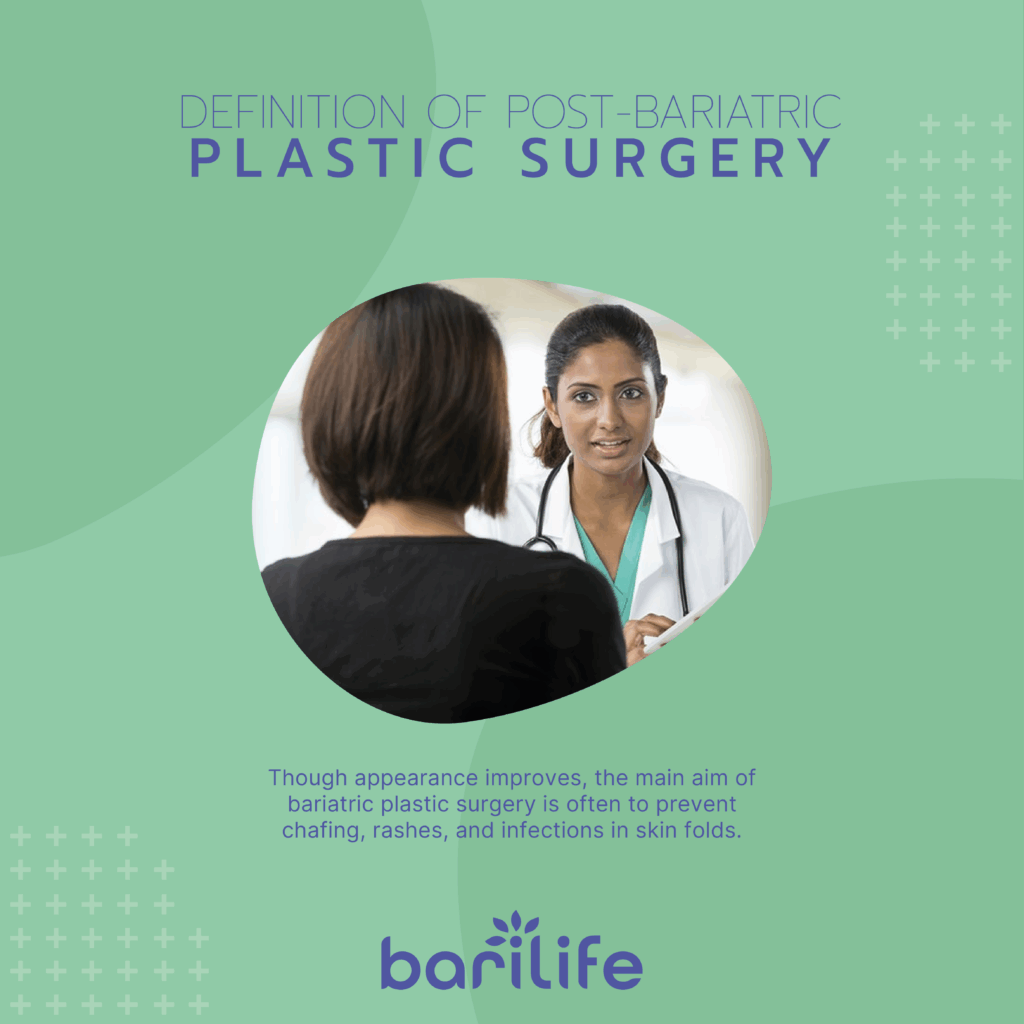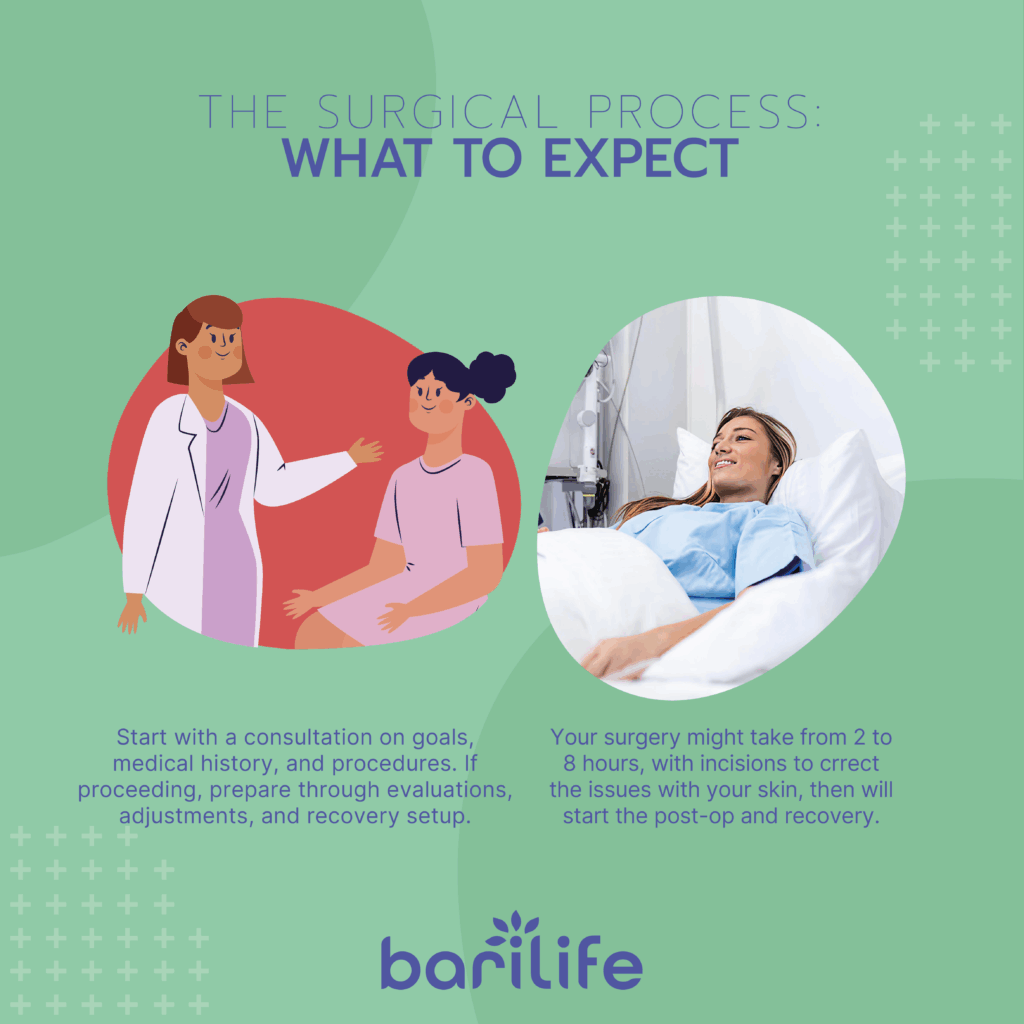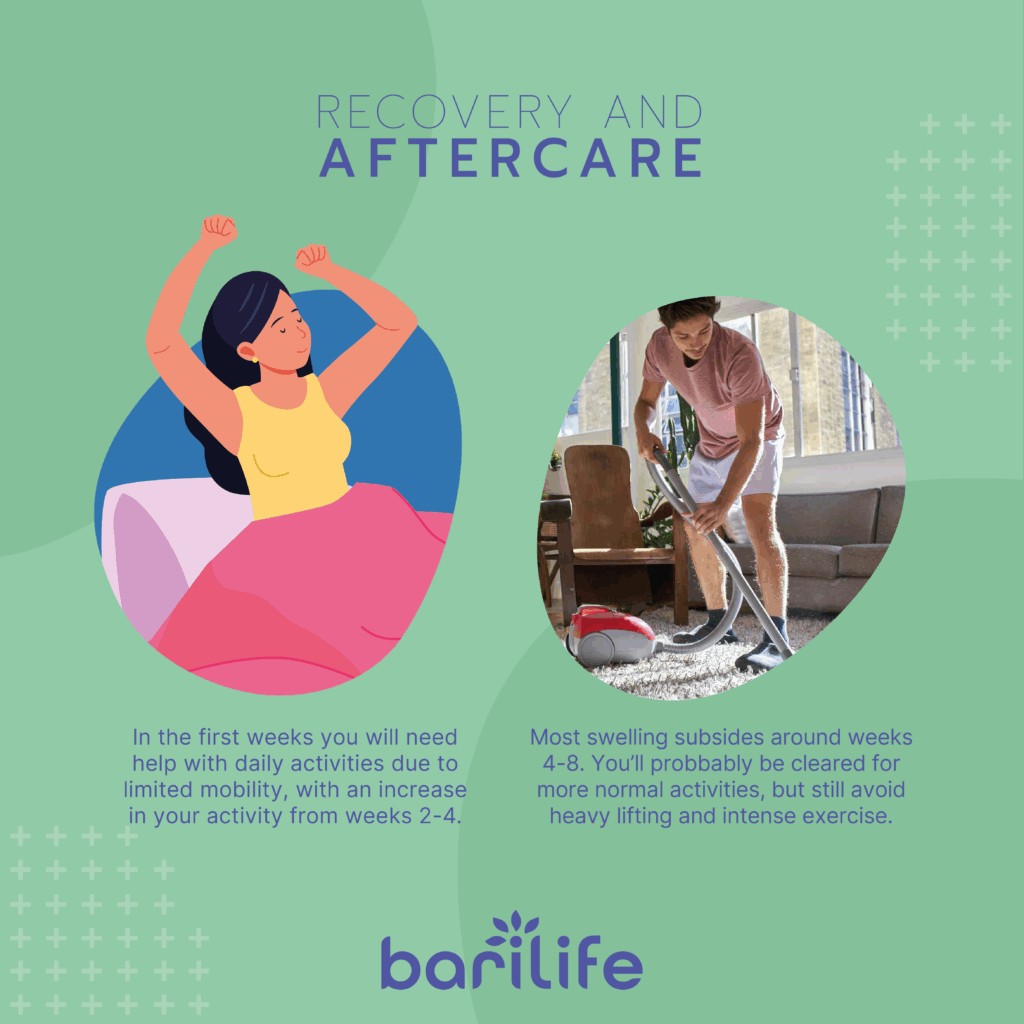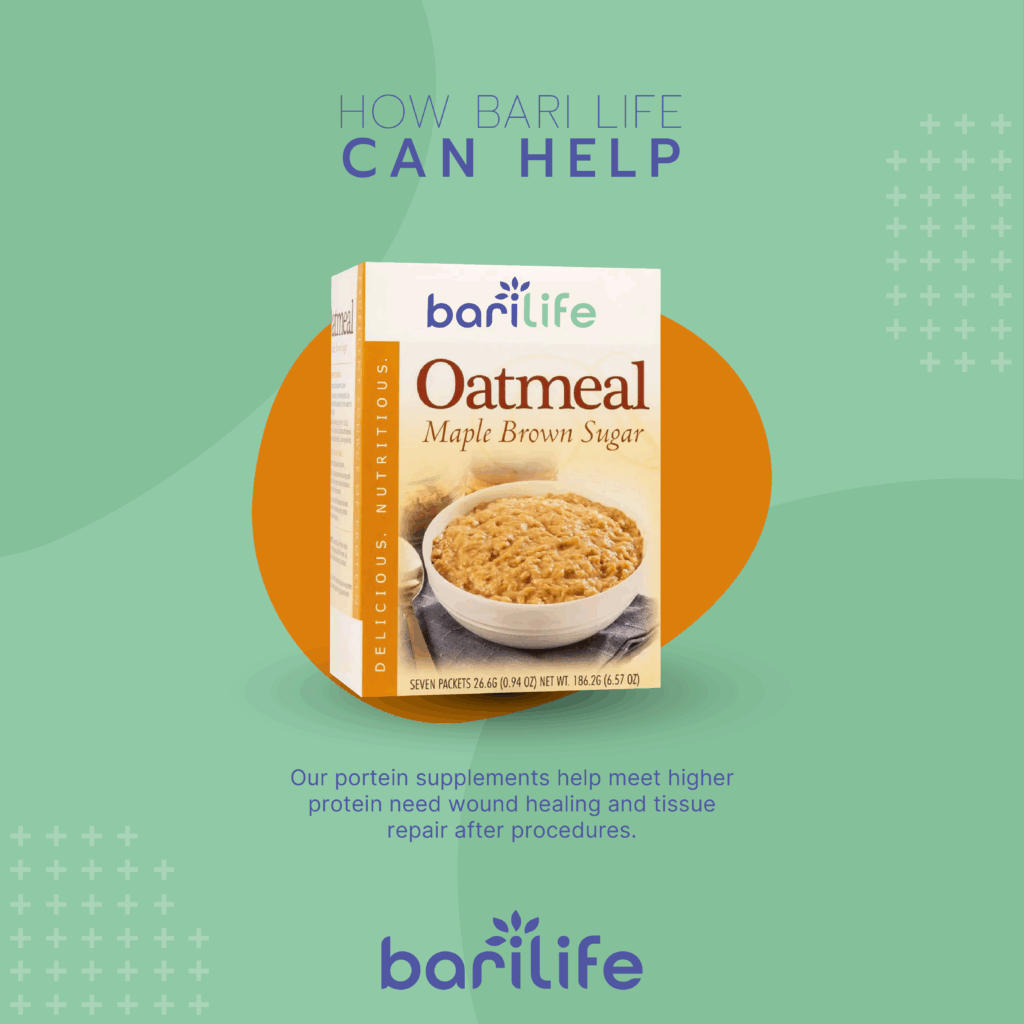Key Takeaways:
- Post-bariatric plastic surgery addresses excess skin issues after drastic weight loss.
- Preparation and proper timing are essential for the best results.
- Recovery requires patience and following specific aftercare instructions.
Congratulations on your weight loss journey! If you’ve achieved significant weight loss through bariatric surgery, you might be considering the next step: dealing with excess skin. Post-bariatric plastic surgery can help complete your transformation by getting rid of excess skin and reshaping your body. This guide will walk you through everything you need to know about these procedures.
Table of Contents
Definition of Post-Bariatric Plastic Surgery

Post-bariatric plastic surgery, also called body contouring, includes procedures designed to get rid of the extra skin that often remains after major weight loss. When you lose a significant amount of weight quickly, as often happens after bariatric surgery, your skin might not have the elasticity to shrink back to your new body size. This often leads to skin issues after bariatric surgery, such as loose, hanging skin that may cause physical discomfort, hygiene issues, or affect your self-confidence.
These plastic surgeries for bariatric patients typically address areas where excess skin is most common: the abdomen, arms, thighs, breasts, and buttocks. The overall goal isn’t just cosmetic, although improved appearance is certainly a benefit. Many people seek bariatric plastic surgery to reduce chafing, rashes, and infections that can happen in skin folds. It’s also meant to improve mobility and encourage a more comfortable feeling in your clothes.
Unlike weight loss surgery, which focuses on reducing weight, bariatric reconstructive surgery focuses on contouring your body to match your new, healthier size.
Types of Post-Bariatric Plastic Surgery Procedures
You might need one or more of these procedures depending on your specific needs. These often follow a comprehensive evaluation of your bariatric surgery before and after condition, with surgeons examining where skin removal after bariatric surgery is most needed.
Abdominoplasty (Tummy Tuck)
A bariatric tummy tuck is often the most sought-after procedure after weight loss. This procedure gets rid of the “apron” of excess skin and fat hanging from your abdomen, while also tightening the underlying muscles that have stretched during weight gain. Abdominoplasty after bariatric surgery is more extensive than a standard tummy tuck because there’s typically more skin to remove.
Brachioplasty (Arm Lift)
This procedure targets the hanging skin on your upper arms. During brachioplasty, your surgeon removes excess skin and fat between your armpit and elbow, resulting in more toned-looking arms.
Thigh Lift
This procedure removes excess skin from your inner or outer thighs, creating smoother contours. This can significantly reduce chafing and make physical activity more comfortable.

Mastopexy (Breast Lift)
Weight fluctuations can result in breasts sagging and losing shape. A breast lift raises and reshapes them by removing the excess skin and tightening the surrounding tissue.
Lower Body Lift
This comprehensive procedure addresses excess skin in your abdomen, buttocks, hips, and outer thighs in one surgery. It’s essentially a tummy tuck that continues around to your back, creating a “belt” of skin removal. This is one of the more extensive post-bariatric surgery plastic surgery options.
Some people also consider face and neck lifts, since facial skin also tends to sag after major weight loss. Others might need post-bariatric skin removal on their back or chest areas.
Candidacy: Who Qualifies for Post-Bariatric Surgery?
Not everyone is immediately ready for plastic surgery after weight loss. Good candidates have typically reached a stable weight they’ve maintained for at least 6-12 months. Continuing to lose weight after your procedure could create new areas of sagging skin, while gaining weight could stretch your results.
Your overall health should be good, free from conditions that might disrupt healing or raise surgical risks. This includes being a non-smoker, as smoking can definitely impact wound healing.
Many candidates also have physical issues from excess skin, such as rashes, infections, or mobility limitations, or they might be psychologically affected by their appearance. You should have realistic expectations about what surgery can achieve. While the results can be dramatic, you will have scars, and your body won’t look exactly like someone who never experienced obesity.
If you’re considering these procedures, have a consultation with a plastic surgeon specializing in post-weight loss body contouring. Centers like Miami Bariatric and Plastic Surgery or Glendale Post Bariatric Plastic Surgery offer specialized care for bariatric patients.
The Surgical Process: What to Expect
Here are some things you can expect during the process of getting bariatric plastic surgery.

Initial Consultation
Your journey starts with a thorough consultation with a plastic surgeon who is experienced in post-weight loss procedures. During this meeting, you’ll discuss your goals, medical history, and the procedures that might best address your concerns. The surgeon will check your body, assess your skin elasticity and excess, and create a surgical plan.
Preoperative Preparation
Once you decide to proceed, you’ll need to complete any required medical evaluations, adjust medications as directed, quit smoking at least six weeks before surgery, arrange for help during recovery, and prepare your recovery space.
Surgery Day
Post-bariatric plastic surgery is typically performed under general anesthesia. Surgery can take anywhere from 2 to 8 hours, depending on which procedures you’re having. The surgeon will create incisions in the predetermined patterns, remove excess skin and fat, reposition the remaining tissue, and close the incisions.
Immediate Postoperative Period
After surgery, you’ll be monitored as you wake up from anesthesia. You’ll likely have drains, compression garments, and dressings over your incisions. Pain, swelling, and bruising are typical symptoms and can be managed with medication.
Risks and Complications of Post-Bariatric Plastic Surgery
General surgical risks include reactions to anesthesia, bleeding, infection, poor wound healing, blood clots, and changes in skin sensation. Prepare for some scarring since body contouring procedures often require lengthy incisions. It’s also normal to see irregularities in asymmetry and contour as your body heals from the procedure. It’s common to experience seroma (fluid accumulation), and it’s usually managed with drains during early recovery.
If you’ve had bariatric surgery, you might have nutritional deficiencies that could affect wound healing. This is why proper nutrition before and after skin removal surgery is crucial.
Recovery and Aftercare
Recovery varies depending on which procedures you’ve had, but most follow a general timeline. The first week is typically the most uncomfortable period. You’ll need help with daily activities and will be managing pain, drains, and limited mobility.

During weeks 2-4, drains are usually removed, and you’ll gradually increase your activity level while continuing to wear compression garments. Most people take 2-4 weeks off work. By weeks 4-8, much of the swelling has subsided, though some will persist for months. You’ll likely be cleared for more normal activities but should still avoid heavy lifting and intense exercise.
For aftercare, wear compression garments as directed, attend all follow-up appointments, follow wound care instructions meticulously, keep a stable weight, and protect your scars from sun exposure for at least one year.
Conclusion
Post-bariatric plastic surgery can be the final step in your weight loss journey, addressing the excess skin that often remains after drastic weight loss. While these procedures involve recovery time and visible scars, most people find the benefits—improved comfort, mobility, and self-confidence—well worth it.
The key to successful results is choosing the right timing (weight stability is crucial), selecting a qualified surgeon with experience in post-weight loss body contouring, having realistic expectations, and following all pre- and post-operative instructions carefully.
How Bari Life Can Help
Surgery places demands on your body that require optimal nutrition to meet. Our bariatric protein shakes and bariatric protein bars can help you meet the increased protein requirements needed for wound healing and tissue repair after procedures like a tummy tuck following bariatric surgery. Bari Life’s specialized bariatric vitamins and supplements can make a huge difference in your recovery and results.
Choosing Bari Life supplements before and after your plastic surgery gives your body the nutritional support it needs for optimal healing, leading to better results and fewer complications. Our range includes bariatric multivitamins, bariatric multivitamin with iron, and bariatric vitamins chewable — all designed to deliver essential nutrients in easy-to-absorb forms.
We also offer bariatric calcium chews to support bone health, liquid bariatric vitamin options for those who prefer non-pill forms, and bariatric probiotic supplements to support digestive health. If you’re concerned about nutrient-related side effects like thinning hair, our bariatric vitamins for hair loss are specifically formulated to help.
Looking for something between meals? Try our delicious bariatric snacks — perfect for staying on track with your nutrition goals while enjoying tasty options.
Don’t compromise your plastic surgery outcomes with inadequate nutrition. Visit Bari Life’s website today to explore our complete line of bariatric-specific supplements designed to support your body through every stage of your journey.




What are your tips and tricks to post-bariatric success?